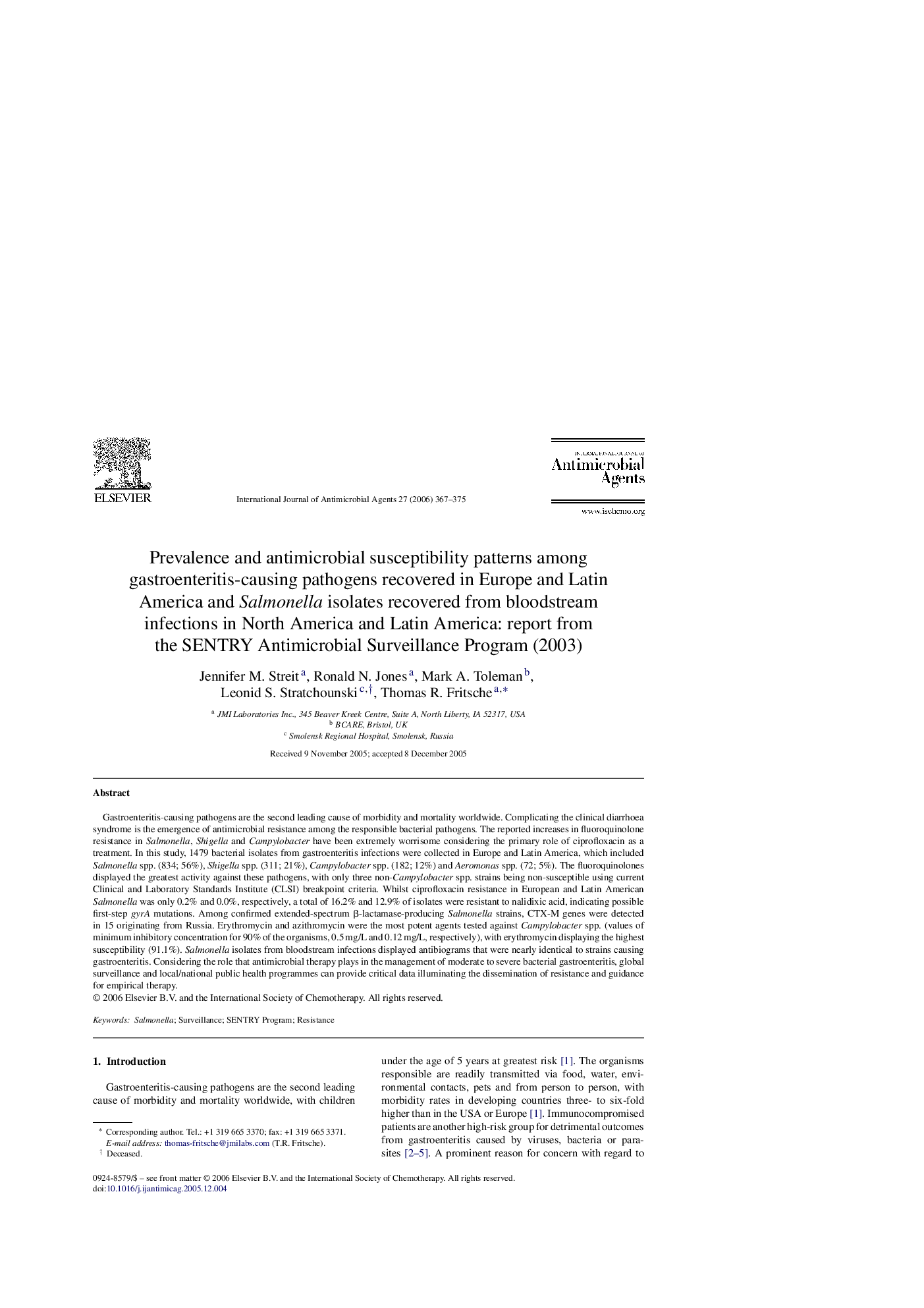| Article ID | Journal | Published Year | Pages | File Type |
|---|---|---|---|---|
| 3360807 | International Journal of Antimicrobial Agents | 2006 | 9 Pages |
Gastroenteritis-causing pathogens are the second leading cause of morbidity and mortality worldwide. Complicating the clinical diarrhoea syndrome is the emergence of antimicrobial resistance among the responsible bacterial pathogens. The reported increases in fluoroquinolone resistance in Salmonella, Shigella and Campylobacter have been extremely worrisome considering the primary role of ciprofloxacin as a treatment. In this study, 1479 bacterial isolates from gastroenteritis infections were collected in Europe and Latin America, which included Salmonella spp. (834; 56%), Shigella spp. (311; 21%), Campylobacter spp. (182; 12%) and Aeromonas spp. (72; 5%). The fluoroquinolones displayed the greatest activity against these pathogens, with only three non-Campylobacter spp. strains being non-susceptible using current Clinical and Laboratory Standards Institute (CLSI) breakpoint criteria. Whilst ciprofloxacin resistance in European and Latin American Salmonella was only 0.2% and 0.0%, respectively, a total of 16.2% and 12.9% of isolates were resistant to nalidixic acid, indicating possible first-step gyrA mutations. Among confirmed extended-spectrum β-lactamase-producing Salmonella strains, CTX-M genes were detected in 15 originating from Russia. Erythromycin and azithromycin were the most potent agents tested against Campylobacter spp. (values of minimum inhibitory concentration for 90% of the organisms, 0.5 mg/L and 0.12 mg/L, respectively), with erythromycin displaying the highest susceptibility (91.1%). Salmonella isolates from bloodstream infections displayed antibiograms that were nearly identical to strains causing gastroenteritis. Considering the role that antimicrobial therapy plays in the management of moderate to severe bacterial gastroenteritis, global surveillance and local/national public health programmes can provide critical data illuminating the dissemination of resistance and guidance for empirical therapy.
